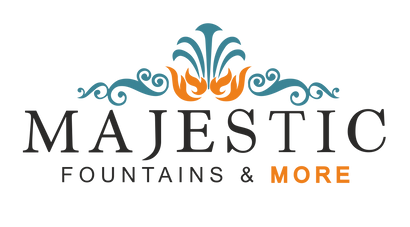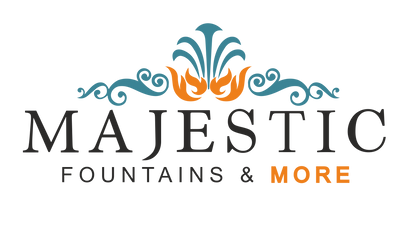Your Cart is Empty
Free Shipping | Tax Free in most states | Info@MajesticFountains.com
Menu
-
- Memorial Day Sale
- Fire Features
- Pool Elements
- Indoor Fountains
- Outdoor Fountains
- Pots & Planters
- Sculptures & Statues
-
- 1 (855)-523-7077
- Login

Free Shipping | Tax Free in most states | 855-523-7077 | Info@MajesticFountains.com
Insight Topics
How To Install Planter And Water Bowl
March 23, 2023 5 min read

How can incorporating plants and the sounds of flowing water enhance your swimming pool? Integrating outdoor elements into your pool area creates a natural and organic ambiance. Adding greenery provides a burst of color, often as the missing element that completes the overall design. Moreover, it's undeniable that cherished plants can elevate any aesthetic.
This comprehensive resource will walk you through seamlessly incorporating planters and water bowls into your outdoor living space. By integrating these elements, you'll enhance the aesthetic appeal of your area and create a soothing and inviting atmosphere for you and your guests to enjoy.
Installation Warnings To Note
- This guide contains essential information for the fire bowl's secure installation and safe operation. It is crucial to follow these instructions carefully to ensure your feature's proper functioning and longevity while maintaining a safe environment around it.
- It is crucial not to modify the product or its configuration under any circumstances, as doing so could lead to unintended consequences.
- Water requirements for the water spillway are essential to ensure optimal performance. The recommended flow rate for this feature is between 12 to 15 gallons per minute (GPM).
Items Needed
- Silicone or epoxy adhesive
- 3/4" PVC Pipe OR Flexible PVC
- Soil
- Plants
Planter And Water Bowl Installation
Choosing the location
- When choosing a location for your planter and water bowl installation, it's important to select an area with proper drainage. This ensures that excess water is efficiently managed, preventing issues such as flooding, waterlogging, and potential damage to the surrounding landscape or structures.
- When selecting a spot for your planter and water bowl, prioritize convenience for installation and upkeep by opting for accessible locations.
- When choosing a location for an object, it's essential to consider the safety of others. Opting for an area that is not frequented by pedestrians is crucial to prevent accidental collisions and potential injuries. Therefore, take care to select a spot away from high-traffic areas.
- When selecting a location, it's important to choose a surface that is level to ensure stability and safety. A sloping or uneven surface could cause equipment or structures to tilt or fall, potentially leading to injury or damage.
Bowl Installation
- The bowl is not attached or fixed to any other object or surface, and is able to remain upright on its own. Its stability and balance allow it to stand freely without any external support or attachment.
- When mounting an object, it is often recommended to use concrete anchors or adhesive to ensure a secure and long-lasting attachment. These methods provide a strong bond between the mounting surface and the object being mounted, which helps to prevent any unwanted movement or detachment. However, whether to use concrete anchors or adhesive is ultimately up to the individual and depends on the specific circumstances and materials involved.

Connecting the water supply
- The spillway, which is designed to regulate the water level in a reservoir or dam, features a 3/4-inch inlet. This inlet is an opening through which water flows into the spillway, where it is then diverted away from the dam or reservoir. The size of the inlet is an important factor in determining the flow rate of water through the spillway, and it must be carefully designed to ensure safe and efficient operation of the dam or reservoir system.
- When it comes to choosing the material for your water line, there are a few options to consider. PVC pipe is a popular choice due to its affordability and ease of installation. Flex PC pipe is another option that offers flexibility and durability, making it ideal for areas with high vibration or movement. On the other hand, stainless steel water lines are a long-lasting and corrosion-resistant choice, making them suitable for harsh environments and high-pressure applications. Ultimately, the material you choose will depend on your specific needs and budget.
- When installing a scupper, it's important to properly position it in place to ensure it functions correctly. One way to do this is by using the flexible tabs on the underside of the scupper to support it. These tabs can be bent or adjusted to fit the shape and size of the opening where the scupper will be placed, providing a secure and stable fit. This will help prevent leaks and other issues that could result from an improperly positioned scupper.
- When installing a scupper, it is important to ensure that it is level to prevent any water spillage. To secure the scupper in place, you can use a clear epoxy or silicone adhesive. However, it is essential to allow the adhesive to cure completely before inserting any soil. This will ensure that the scupper is firmly in place and prevent any shifting or movement that may cause water to spill out. By taking these steps, you can ensure a superior water spill for your installation.

Adding the soil
- To improve drainage in your planter or bowl, consider placing a layer of 2 to 6 inches of gravel at the bottom before adding soil. This will allow excess water to flow through the soil and prevent root rot.
- When adding soil to a planting area or container, it's important to start slowly and add small amounts at a time. This allows for proper leveling and prevents over-packing.
- To complete the gardening project, it is necessary to insert the plants into the soil, ensuring proper spacing and depth for each species. Water regularly and monitor growth.
- When performing any task that involves the scupper, it's essential to take precautions to avoid disrupting its position or knocking it out of place, which could cause problems or even damage to the system.
- To complete the setup, carefully pour the remaining soil into the container or area, making sure to distribute it evenly and compact it as necessary to ensure stability.
- When planting in a bowl or container, it's important to remember to leave some space between the soil and the top of the bowl, typically about 1-2 inches. This allows room for watering and prevents soil from spilling over the edges.
To Sum It Up
Installing a planter and water bowl is a great way to add some greenery and tranquility to your indoor or outdoor space. By following these simple steps, you can create a beautiful and functional feature that will enhance your home or garden. Remember to choose the right location, use appropriate materials, and take proper care of your plants and water source. With a little effort and creativity, you can enjoy the benefits of a planter and water bowl for years to come.
Subscribe
Every month we give away a$100 Gift Cardto a new subscriber!
Enter your email to subscribe and receive notifications.
